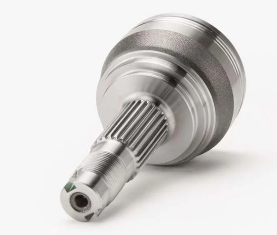Installation and Maintenance of Cross Universal Couplings
Installation and Maintenance of Cross Universal Couplings
 Pre-Installation Inspection:
Pre-Installation Inspection:
When installing the cross universal coupling, it is essential to check for errors in the stop face and end face connection dimensions, the distribution of the flange bolt holes, and the coaxiality of the coupling. Pay attention to the alignment and initial phase, as both ends of the coupling can serve as the driving shaft. However, the spline joint should be placed away from vibration or impact sources.
Fastener Requirements:
Nuts, bolts, and other fasteners must meet the mechanical performance standards. When tightening the nuts, a small amount of adhesive may be applied to the threads. After operating for one shift under load, check if any bolts have loosened, and retighten them to the standard torque as a preventive measure. This process should be repeated after two shifts to prevent loosening.
Assembly Considerations:
The assembly process should follow the reverse order of disassembly. Ensure that the spline shaft and sleeve are aligned in the same phase. When assembling the cross shaft, adjust the shims properly to ensure that the centerline of the fork head and the centerline of the cross shaft are coaxial, with a permissible deviation of less than 0.05–0.1mm (smaller deviations for smaller specifications). Additionally, maintain a gap of 0.06–0.12mm between each shaft end and the shim to prevent excessive shaft movement.
Lubrication and Maintenance:
Regular lubrication of the spline and universal coupling bearings is crucial. Typically, use No. 2 industrial lithium grease; for high-temperature applications, No. 4 synthetic lithium grease or No. 3 or 4 calcium grease is more suitable. Initially, lubricate once a month for the first three months, and then every three months under stable operating conditions. For high-temperature conditions, lubricate weekly.
Inspection and Repair:
Universal couplings should be inspected after about six months of operation, but the specific timing may vary depending on operating conditions. If vibration, abnormal noise, or oil leakage is detected, the machine should be stopped immediately for inspection.
Disassembly and Cleaning:
When repairing, carefully inspect the components, including the cross shaft and bearings, for signs of pitting, peeling, wear, or indentations. Indentations greater than 0.25mm or excessive wear of shims (more than 0.35mm) should lead to replacement of the parts. During cleaning, do not wash bearings or cross shafts with gasoline or steel wire brushes. After cleaning, use compressed air to dry the parts thoroughly.
Alternative Use of the Cross Shaft:
During each disassembly, adjust the cross shaft by 180 degrees to alternate the use of the cross shaft journal, which helps extend the lifespan of the universal coupling.
By adhering to these installation, lubrication, and maintenance practices, the performance and durability of the cross universal coupling can be significantly improved, reducing the risk of failure and extending its operational life.

 Pre-Installation Inspection:
Pre-Installation Inspection: